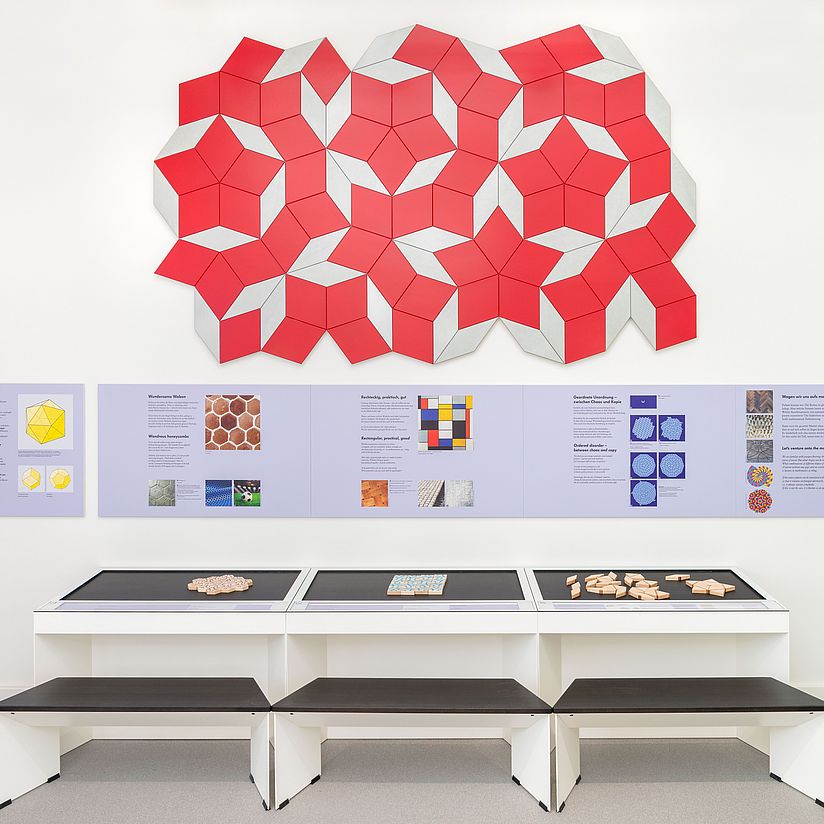
Photo: Deutsches Museum, München | Reinhard Krause und Hubert Czech
Mathematics
Fun to the power of three
From shape to formula and back again: Mathematics makes everything easier - even if some series of numbers, letters and symbols do not suggest this at first glance. For example, shark fin and house gable are simply triangles in mathematical terms. And all triangles have certain, identical characteristics. These universally valid characteristics then help again to create, to grasp, to describe new things, buildings or technologies. The “art of learning”, for which the term from ancient Greek stands, is thus not a high art, but quite simply an important part of our everyday life.
Game and exhibit and application = fun to the power of three! That is the formula for the Mathematics exhibition. The cube serves as the basic element, which creatively accompanies the tour through the areas of introduction, dimension, perspective and symmetry. There are “floating” cubes with information, polygonal media stations and cube-shaped participation tables. In this way, the interactive concept is set in a geometric frame of reference and expanded with historical exhibits and examples of applications. The many games facilitate the understanding of mathematical thinking. In addition, richly illustrated contextual building blocks show how this way of thinking is implemented in a very practical way, for example in architecture. The instruments act as a “bridge” in between.
“In designing the exhibition, we were faced with the challenge of arousing interest in mathematics, but also offering something for math enthusiasts,” says Katja Rasch, the exhibition's curator. She is particularly looking forward to “the ‘ah’ experience when a mathematical connection is seen through and to people recognizing mathematics in their everyday lives here, where they would not have suspected it.” To this end, many new but also well-known hands-on stations shine in new splendor, along with unique exhibits, some of which – such as the perspective models and perspectographs – have long lain dormant in the museum’s depot.
Facts and figures:
Location: Level 2
Exhibition area: 190 sqm
Exhibits: approx. 100
Participation stations: 31
Media stations: 5
Diorama: 1
Highlight: The Sierpinski tetrahedron
The Sierpinski tetrahedron, which hangs from the ceiling, looks like a spatial body, but from a mathematical point of view it only has the dimension two and is a so-called fractal: An octahedron with half the edge length was cut out of the center of a tetrahedron (edge length 92 cm). From the remaining four tetrahedra now again octahedra with again half edge length were cut. And this process was repeated six times, so that this “pyramid” actually consists of 4096 tiny pyramids (with 1.4 cm edge length).
Download the Press Release
PM_Mathematics.pdf (PDF 5 MB)
